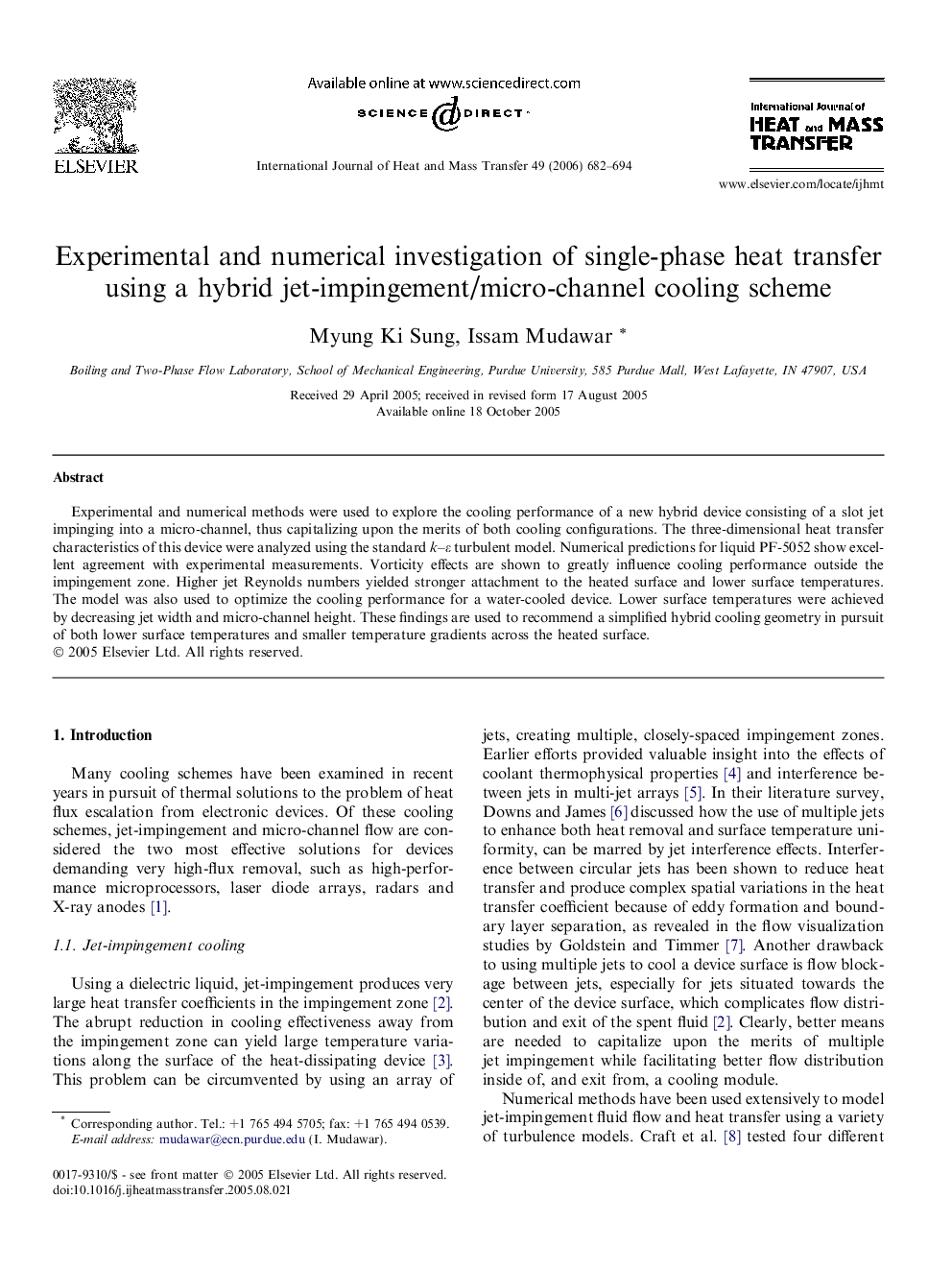| Article ID | Journal | Published Year | Pages | File Type |
|---|---|---|---|---|
| 662520 | International Journal of Heat and Mass Transfer | 2006 | 13 Pages |
Experimental and numerical methods were used to explore the cooling performance of a new hybrid device consisting of a slot jet impinging into a micro-channel, thus capitalizing upon the merits of both cooling configurations. The three-dimensional heat transfer characteristics of this device were analyzed using the standard k–ε turbulent model. Numerical predictions for liquid PF-5052 show excellent agreement with experimental measurements. Vorticity effects are shown to greatly influence cooling performance outside the impingement zone. Higher jet Reynolds numbers yielded stronger attachment to the heated surface and lower surface temperatures. The model was also used to optimize the cooling performance for a water-cooled device. Lower surface temperatures were achieved by decreasing jet width and micro-channel height. These findings are used to recommend a simplified hybrid cooling geometry in pursuit of both lower surface temperatures and smaller temperature gradients across the heated surface.
